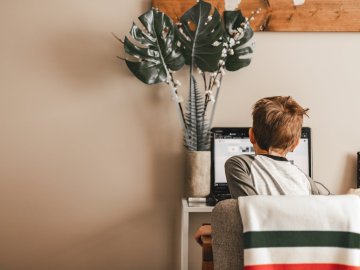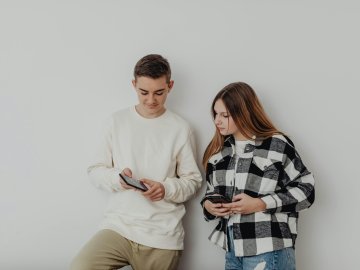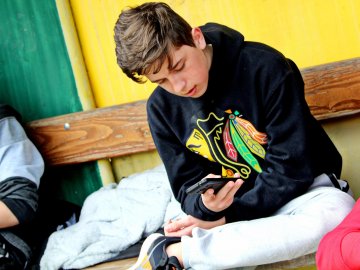There has been a bit of a flurry of news articles recently about apps which promise to call you as various different cartoon/ film/ Disney characters. The story came to light after a mother shared how an app (rated PEGI 3) that she downloaded for her 3 year old, featured a voiceover that threatens to cut children with a knife.
The media picked up on the story and it went viral. However contrary to what they will have you believe, this isn’t a new phenomenon and these type of apps have been around for as long as the App Store and Google Play themselves.
How they work
You can see the appeal of such apps to young people; their all-time favourite TV character is going to actually call them and they’ll get to speak to them, I mean that’s the ultimate fandom fantasy right there isn’t it?! The problem is what happens during the call.
Sometimes the nature of the conversation is completely inappropriate -imagine Chase from Paw Patrol or Elsa from Frozen calling your 2 year old and then swearing… yeah not so great!
Reporting
Well, it was nice to hear that Google has already taken action, promptly removing the app in question from their Play Store. However since the story has gone viral, unsurprisingly there’s been hundreds of new apps created claiming to do the same thing: a famous TV/ film character ringing you for a conversation.
Some of these will be harmless and others more sinister and for every one that’s reported another dozen will be uploaded, making the whole reporting process seem very laborious and slightly pointless.
What can parents do?
What we can do though is pay attention to what our children are downloading and try and keep the lines of communication about what they get up to online open. That way if something sinister does rear its ugly head, they’ll come to you for help. As with all these things we can’t stop people from creating apps of this nature, but we can prepare young people for what they might see or hear.
Keep talking
- It really is that simple; don’t let a day pass where you don’t talk about what you got up to online, just as you would any other aspect of life
- Do 2 and 3 year olds really need their own devices? Best practice guidelines recommend shared screen time in the earliest years of life and, whilst there is the temptation to use YouTube as a babysitter, just don’t! The risks far outweigh the benefits at this early age. Toddlers benefit the most from interaction and communication with others so be present and get involved with their screen time experiences and, if dinner has to be cooked or an important phone call has to be made, let them view pre-moderated content: a favourite programme on Netflix or Cbeebies (other services are available of course!) or perhaps a good old DVD.
- Make sure you’ve got your device and internet parental controls in place to try and prevent harmful content being seen. You’ll know that if a child is determined to see something that you’ve forbidden they’re likely to find a way though so that’s why conversations about the ‘why’ when not allowing your child to access certain apps/ content are really important. Take a look at the UKSIC’s guidance for parents for more information
- Don’t forget to talk to the parents of your child’s friends to make sure they’re on board too. You might feel in control in your own house but it’s worth knowing what other parents measures are too for when the inevitable playdates and sleepovers happen.
- If you’re a professional supporting a young person and have concerns about the apps they’re accessing, why not give the Professionals Online Safety Helpline a call for further support and advice.






